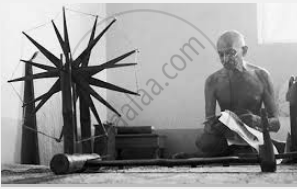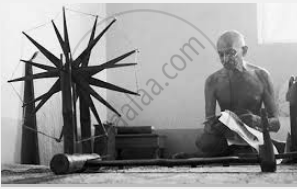Advertisements
Advertisements
प्रश्न
This is the picture of an Indian leader who was known as the ‘Father of the Nation’,

Mention the features of his non-violent struggle against the British.
उत्तर
- Peaceful demonstration
- Defiance of unjust British laws
- Boycott of British goods, institutions, and services.
- The use of the charkha and khadi to promote self-reliance and the swadeshi spirit.
- Non-payment of the oppressive taxes. The idea was to bring the government to a standstill.
संबंधित प्रश्न
Fill in the blank:
After the British brutalities in Amritsar, Gandhiji declared that it would be a sin to co-operate with the __________ government.
Match the Following:
| A | B |
| 1 Gandhiji | (a) Symbol of swadeshi |
| 2 Charkha | (b) Boycott of British goods |
| 3 Jallianwala Bagh | (c) Salt Satyagraha |
| 4 Dandi March | (d) 13 April 1919 |
| 5 Non-Cooperation Movement | (e) Truth and non-violence |
Fill in the blanks:
When the Quit India Resolution was passed in the year ___, Gandhiji gave the Indians the mantra _________.
Fill in the blank:
In February 1947, the British government declared that power would be transferred to the Indians by __________.
State whether the following is true or false:
In 1919, General Dyer had issued an order banning all public meetings.
State whether the following is true or false:
Independence Day was celebrated on 26 January in 1930.
State whether the following is true or false:
The upsurge of 1942 was the last great mass challenge to British authority.
Answer the following question briefly
With reference to Gandhiji, discuss his views on the following issues: Social justice
This is the picture of an Indian leader who was known as the ‘Father of the Nation’,

Why is Mahatma Gandhi called the leader of the masses?
State whether the following statement is True or False:
The Charkha was a symbol of progress.
